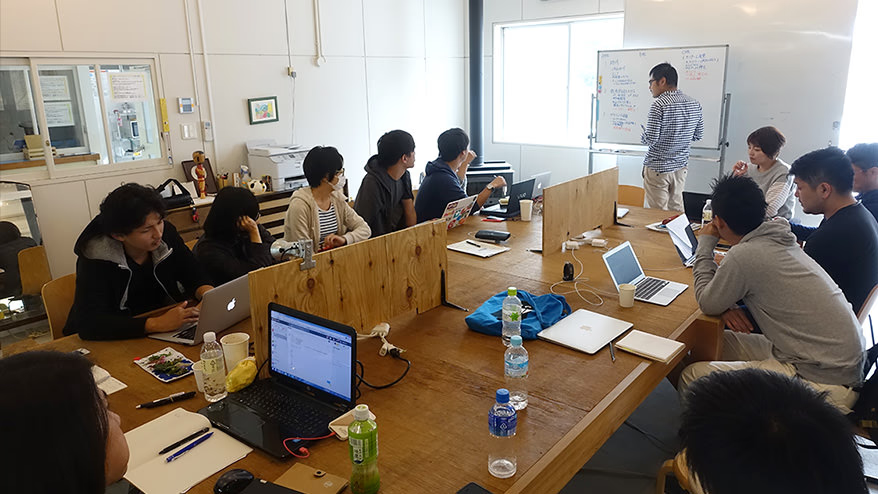コーディングファクトリー部ディレクター/コーダーの田中です。普段は東京で一人暮らしをしながら仕事をしております。さる10月21・22日、弊社サテライトオフィスのある「神山バレー」こと徳島県神山町への視察に参加しました。
神山に行く前に思っていたこと。神山に行って受けた驚き、そして変わったこと。今、この場所で考えていること。書ける限り書かせていただきたいと思います。
いざ、神山へ
モノサスでは以前より神山町にサテライトオフィスを置いています。私が籍を置くコーディングファクトリー部でも、HTMLコーディングを教える職業訓練校『神山塾(ものさす塾)』を開講することになり、10月の神山視察にも参加することになりました。
そこで私も「神山、行きたいです!」と手を挙げたのですが、その時は、サテライトオフィスって、神山ってどんなところだろうとか、飛行機で出張!おもしろそう!とりあえず行ってみよう。としか考えておらず、肝心の「地域創生」に関しては何も知らない状態で、正直なところ、そんなにポジティブな印象はありませんでした。
「町おこしみたいなもん?うまくいってるんかなあ…?」
そのまま迎えた視察当日。
東京から飛行機に乗り、徳島阿波おどり空港からバスに乗って、神山の地へ。

バスの窓からもずっと見えている、自然の風景
見渡す限り緑の山、騒音もなく静かで鳥の鳴き声が聞こえ、空気もおいしい!
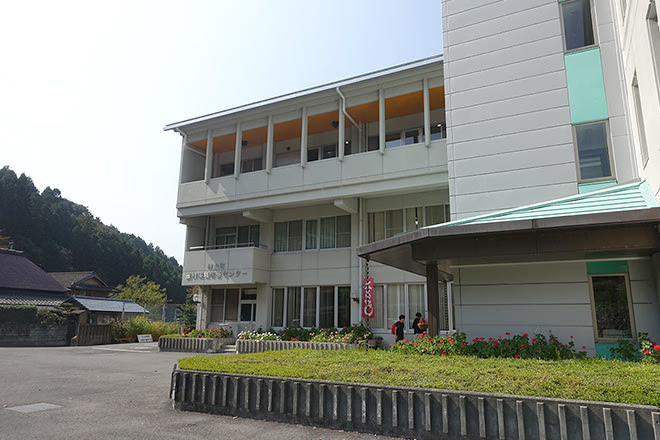
神山町農村環境改善センター
NPOグリーンバレー理事長・大南 信也さんのお話を伺いに、神山町農村環境改善センターへ向かいます。
そして私は、そこで大きな衝撃を受けたのでした。
「否定しない」という「行動」がもつチカラ。
大南 信也さんのお話を聴いて
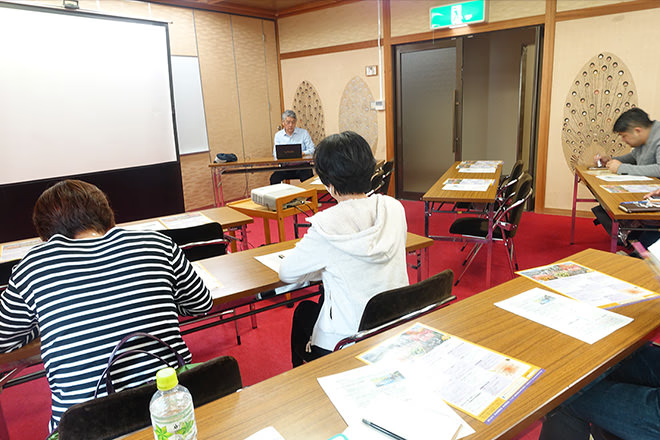
講義を前に資料を読むモノサス社員と、写真奥が大南さん
大南さんからは、グリーンバレー及び神山町の25年(!)にわたる長い活動についてご説明いただきました。
その中で印象深かったのは、神山町を代表する言葉としてご紹介いただいたひとことでした。
「やったらええんちゃう」
大南さん率いるグリーンバレー、そして神山町の皆さんは、誰かが神山町で何かをやりたい!と言ってきたら「やったらええんちゃう」と、ひとまずやってもらうというのです。
「やってみて良かったら続けて、あかんかったらやめればええんです」と、大南さん。
え、そんなんでええの!?
また、「前例がない」「失敗したらどうする」「それで何が変わるのか」…そんな数々の反対意見=アイデアキラーに対して、大南さんは「できない理由より、できる方法を考えよう」、そして「とにかく始めよう(Just Do It)!」の精神のもとに、これまでたくさんの計画を実行されてきたそうです。
「地元の人たちや役所にも反対されないぐらい完璧な計画を練って、それでも実行するには長ーい時間がかかって…そういうのしんどそうやなあ」と思っていた私は、本当に驚きました。
神山町は、今や「地域創生」のモデルともいわれる町です。
たったひとことのもつチカラ。その通り行動し続ける意志の強さ。
神山町の成功には「他者の・自分のやりたいことを否定しない」という「行動」のもつ力が、強く働いていたのかもしれない。
こう思い至った時、私の中の何かが変わり始めました。
自分のやりたいことを仕事にし、
生活の一部にしている人たち
改善センターを後にし、お昼は無農薬有機野菜など地元食材を使った石窯ピザ屋「Yusan Pizza」へ。
こちらを経営されている塩田さんご夫婦も、神山町に移住・開業された方々です。
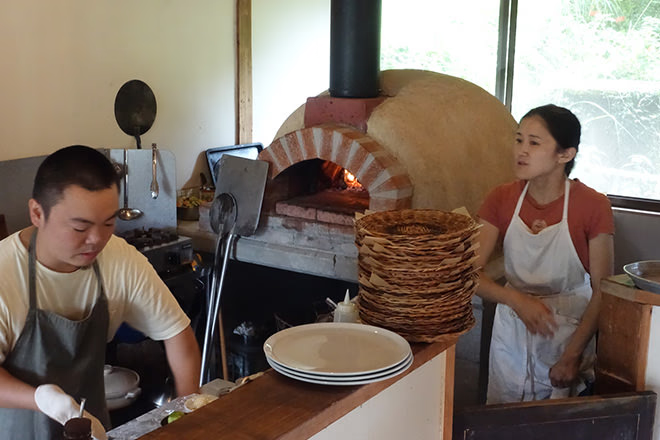
無農薬有機野菜などの地元の食材を使ったピザ屋「Yusan Pizza」を営む塩田さんご夫婦。
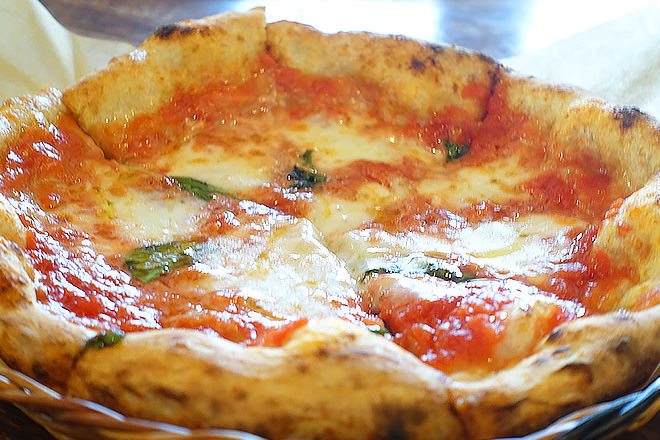
このほかにもサラダやパスタなど、素材の味を生かしたおいしいメニューをたくさんいただきました
お腹いっぱいになった後は、神山町で事業を展開されていたり、サテライトオフィスを設置されている企業の皆様の見学に向かいました。
 Sansan株式会社様サテライトオフィス「神山ラボ」。築70年の古民家を再利用されています。中庭では布団を干されていたり、畑があったり、寝心地のよさそうなハンモックまで!一緒に見学していた弊社コーダーも羨望のまなざし。
Sansan株式会社様サテライトオフィス「神山ラボ」。築70年の古民家を再利用されています。中庭では布団を干されていたり、畑があったり、寝心地のよさそうなハンモックまで!一緒に見学していた弊社コーダーも羨望のまなざし。
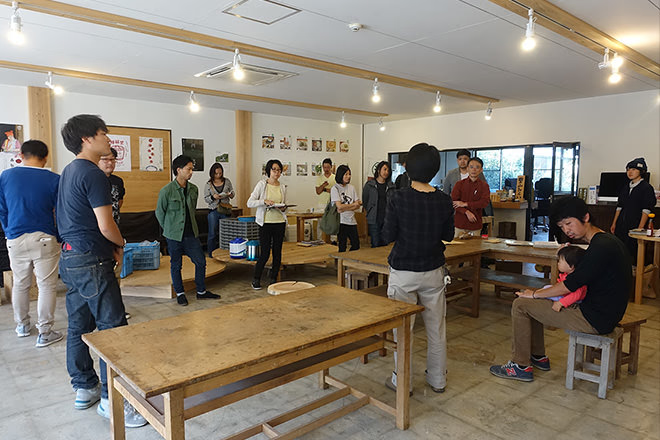
特定非営利活動法人 里山みらい 様のオフィス。大きな机や味のある木製スツールは、元は小中学校で使われていたもの。里山の新しい価値を創造するため、様々な活動をされています。モノサス社員も神山特産・旬のすだちをたくさんいただきました。
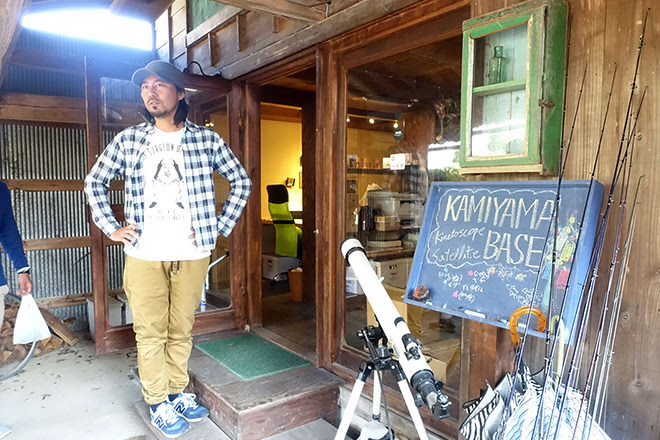 神山町の山や水を守る「神山しずくプロジェクト」を主催される、キネトスコープ社様の神山サテライトオフィス。杉材を使ったタンブラーは驚くほど軽く、光が透けるほど薄い!
神山町の山や水を守る「神山しずくプロジェクト」を主催される、キネトスコープ社様の神山サテライトオフィス。杉材を使ったタンブラーは驚くほど軽く、光が透けるほど薄い!
株式会社えんがわ様「えんがわオフィス」を見学させていただき、代表の隅田 徹さんにお話を伺うこともできました。
えんがわオフィスを「東京本社の分社」ではなく「東京にある会社の一部分」とする考え方には目からウロコ。その他にも、実際に東京の会社が神山にサテライトオフィスを持ってどう仕事していくのか、というお話が聴くことができ、非常に感銘を受けました。
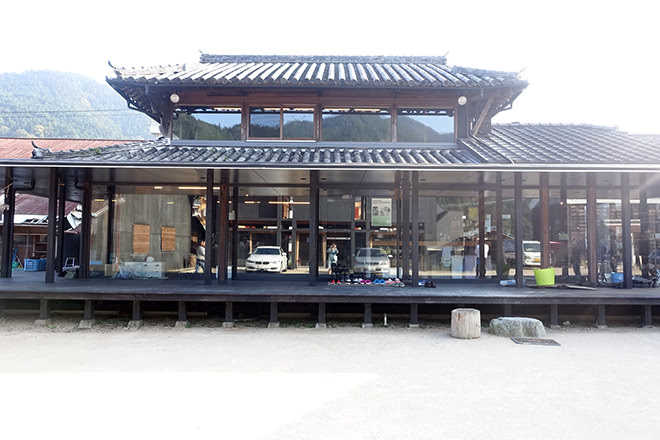
えんがわオフィス。広い敷地内で子供たちが遊んでいました
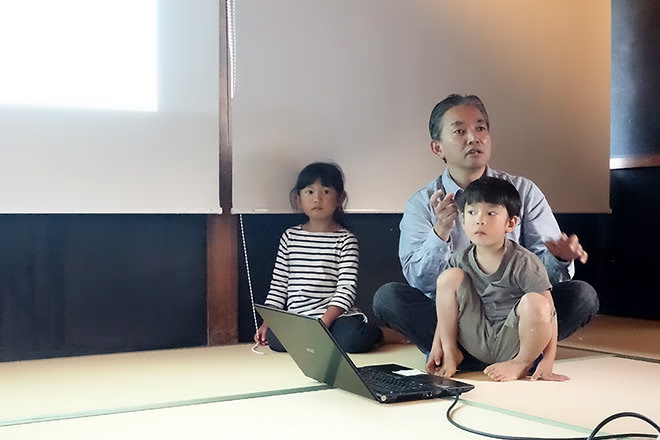
隅田さん。畳敷きのえんがわオフィス2階にてお話いただきました
宿舎である「WEEK 神山」の目の前にある「神山バレー・サテライトオフィス・コンプレックス」では、フリー3Dカーモデラーの寺田 天志(てらだ たかし)さん、プログラマーの本橋 大輔(もとはし だいすけ)さんをはじめとした皆様にお会いしました。
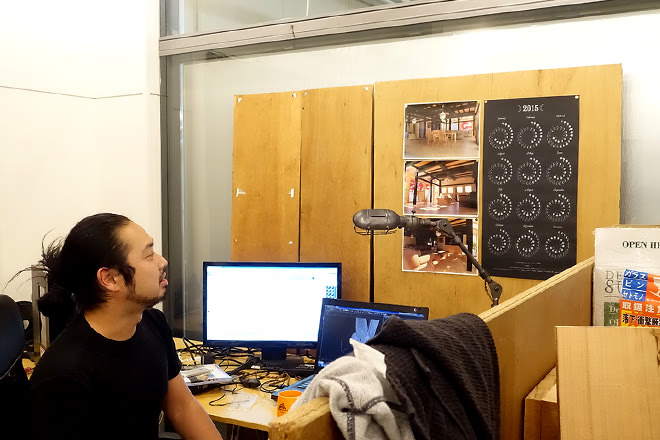
フリー3Dカーモデラーの寺田 天志さん。自宅の内装イメージを口頭で施工業者に説明するも、伝わっているか不安だったため、さっくり3Dでイメージを作ってしまったという絵も飾られています。
どの方のお話にも共通していたのは「自分のスタイルで、やりたいことを仕事をする」という考え方。
そしてまた驚かされたのは「自分のやりたいように、やりたい仕事を」しているだけのはずなのに、それが地域へ、また社会へと還元されていたことです。
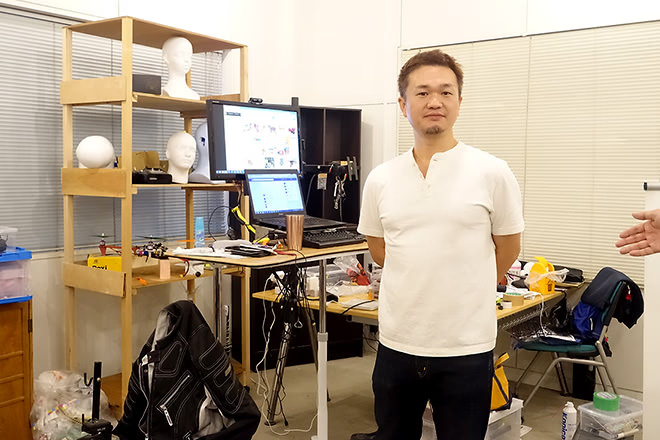
プログラマーの本橋 大輔さんと、パソコンと実験器具が並ぶ作業場。この時はウサギやコウモリなど、動物の聴覚を疑似体験できる装置の実験をされていました。
例えば、前述の寺田さんは本業の傍ら、足の不自由な方やお年寄りの足をモデリングし3Dプリンターで出力、同じ神山町内にあるオーダーメイド靴専門店で使える足形を作成されています。本橋さんはドローンなどの電子工作教室やアクティビティ大会を開かれています。
「地域創生というからには自分のやりたいことは置いといて、地域のために、を第一に考えなければならないんやろな」と思っていた私に、その姿は衝撃とともにとても印象深く刻み込まれました。
「働くということは、あきらめること」
小さいころの自分、
今の自分から見える父の働く背中
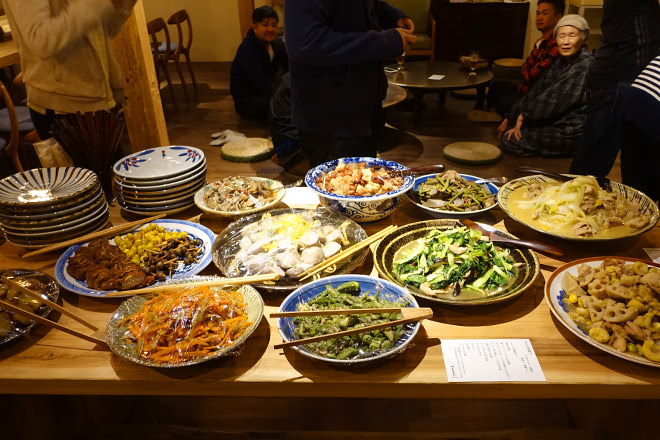
「WEEK 神山」での夕食。こちらすべて、地元のお母さん(写真右上)の手作り!宿泊者・スタッフの皆さん・地元の皆さんで、同じ食卓を囲んでいただきます。
ごく小さいころから、私にとって「働くこと」は「自分のやりたいことをあきらめて、生活のために我慢すること」でした。
生まれたばかりの私と母の生活を守るため、大好きだった音楽を手放した父。毎日朝は早く、夜は遅い。いつも疲れていて、お休みの日はずっと寝ている。
「きっと、お父さんがおじいちゃんになるまで、ずっとこうなんやろうな…」
私は遊んだり勉強したり、やりたいことをやって楽しく過ごしている。私のそういう日々は、毎日働いて好きなことから遠ざかっていく父の、犠牲の上に成り立っていると思っていました。
ずっと申し訳なさを感じ、「働くこと」になかなか希望が持てなかった私ですが、神山に行き、触れた今は、父に心から感謝しています。
大南さんや、神山で出会った方々から感じたのは「神山のために何かをやってあげる」ではなく「自分が神山のために・神山で何かしたいから、やる」という「自分」が主体の言葉と行動でした。
父も、あきらめて我慢していただけじゃなかったと思うんです。きっとそれ以上の働き甲斐=生き甲斐を持ってくれていたんじゃないかと思うんです。
だって、この会社に就職が決まったときも、初めて納品したページが公開されたときも、電話口でとても喜んでくれましたから。
今、この場所で、
私はどう働く?

道の駅で購入したひのきのまな板。なんと130円!毎日使っていて、もう手放せません
父はそうやって働いていた。それでは、私はここでどう働いて、どう生きようか。
やりたいことをあきらめなくてもいいんじゃないか。
やったことがないとか、失敗したらどうしようとか、自分の中のアイデアキラーが邪魔をして、いままで足踏みしていた。
今は無駄だと思うことでも、どこかで何かにつながっていく。
やってみればいいんじゃないか。
できる方法が必ずあるはず。
そして、それはきっと自分のためだけではなく、今働いているモノサスという会社にも、お客様にも還元できるはず。
神山視察に参加して、いちばんの収穫は、そう考えられるようになったことです。
まだまだはっきりとした答えは見つからず、むしろ自分由来の問題が山積している状態ですが、それでも「できる方法を探す」ように、目の前の仕事に対して、前向きにひたむきに取り組めるパワーが身についたのは、神山で出会ったすべてのおかげだと思っています。
神山町の皆様、ありがとうございました。
また、この機会を与えてくれた、モノサスのスタッフにも感謝です。
もっともっと頑張って、何かお返しできるように、成長していきます。
そして、これを読んでくださった皆様へ。
百聞は一見に如かず。ぜひ神山へ、行って見て聞いて、体験してみてください!
